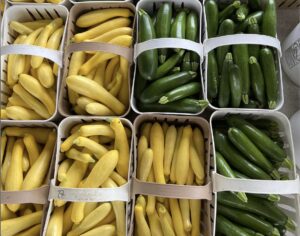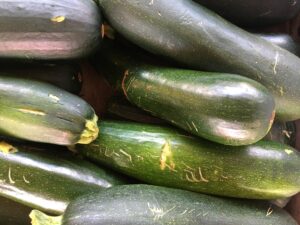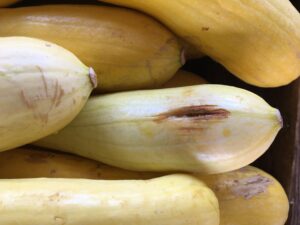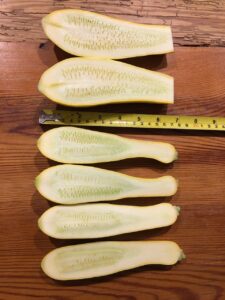Postharvest Produce Guide – Summer Squash
go.ncsu.edu/readext?919113
en Español / em Português
El inglés es el idioma de control de esta página. En la medida en que haya algún conflicto entre la traducción al inglés y la traducción, el inglés prevalece.
Al hacer clic en el enlace de traducción se activa un servicio de traducción gratuito para convertir la página al español. Al igual que con cualquier traducción por Internet, la conversión no es sensible al contexto y puede que no traduzca el texto en su significado original. NC State Extension no garantiza la exactitud del texto traducido. Por favor, tenga en cuenta que algunas aplicaciones y/o servicios pueden no funcionar como se espera cuando se traducen.
Português
Inglês é o idioma de controle desta página. Na medida que haja algum conflito entre o texto original em Inglês e a tradução, o Inglês prevalece.
Ao clicar no link de tradução, um serviço gratuito de tradução será ativado para converter a página para o Português. Como em qualquer tradução pela internet, a conversão não é sensivel ao contexto e pode não ocorrer a tradução para o significado orginal. O serviço de Extensão da Carolina do Norte (NC State Extension) não garante a exatidão do texto traduzido. Por favor, observe que algumas funções ou serviços podem não funcionar como esperado após a tradução.
English
English is the controlling language of this page. To the extent there is any conflict between the English text and the translation, English controls.
Clicking on the translation link activates a free translation service to convert the page to Spanish. As with any Internet translation, the conversion is not context-sensitive and may not translate the text to its original meaning. NC State Extension does not guarantee the accuracy of the translated text. Please note that some applications and/or services may not function as expected when translated.
Collapse ▲Summer (soft rind) squash is immature fruit; it may be harvested at a very immature stage if desired by buyer (“baby”); harvest before maturity when seeds enlarge, harden; rind should be thin, soft, glossy.
Summer squash does not have a long shelf life, unlike mature winter squash. Ideally hold for less than 10 days, perhaps for up to 2 weeks at 41°F, 95% RH. Below that threshold squash may incur chilling injury if held longer than a few days. Browning, pitting and shriveling is an indicator of chilling injury, which may show up once squash is removed from the cooler and into warmer conditions.
Quality Specifications
Shape should be uniform, with overall firmness and a well-trimmed stem; uniformity is important, following quality of specific variety; size may be defined by buyer (length and width); Rind should be clear, free of insect, disease, or handling damage.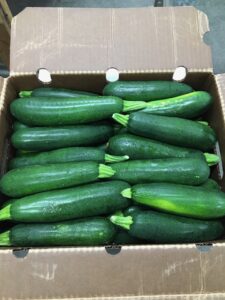
Sizes should be uniform and at appropriate maturity stage.
Common Quality Issues
Overlong stems may damage rind in handling; rind is very delicate, use gloves for harvest and handle with care to avoid scratching. Dirt on fruit may cause surface abrasions, which affect appearance and can provide entry points for disease.
As squash become more mature, the seeds become larger and firmer, detracting from quality.



